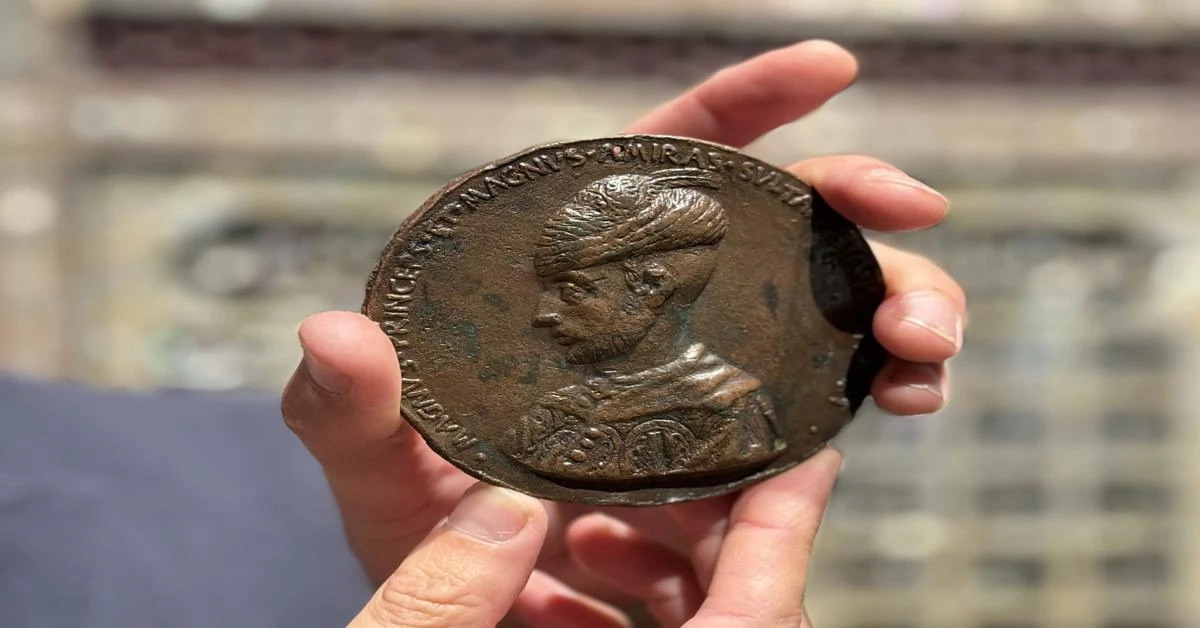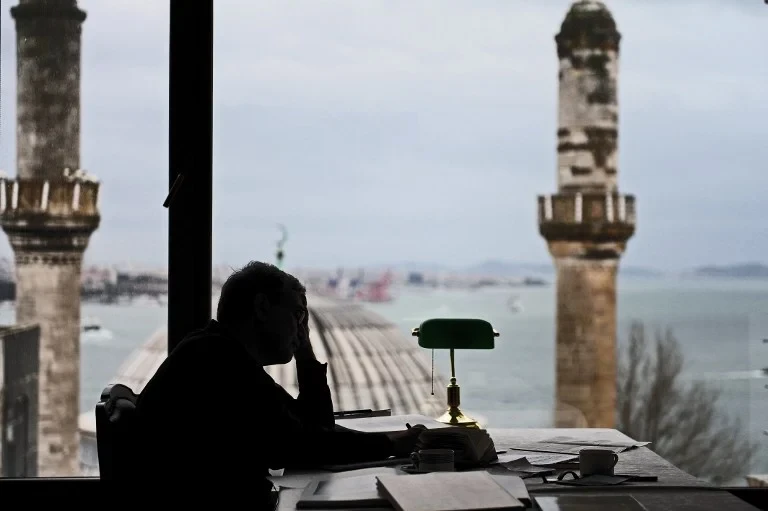Enchanted medallion of Ottoman Sultan Mehmed II to go up in London’s auction

The auction house, which will auction Ottoman Sultan Mehmed II II’s talismanic medal in London on Tuesday, believes that Mehmed II himself placed the order for the medal – which dates back to 1450.
Oliver White, Director of Islamic and Indian Art at Bonhams Auction House, explained the details of the medal and other items at the auction with an estimated sale price of £1.5-2 million (approximately $1.9-$2.5 million) to an Anadolu Agency (AA) correspondent.
A multitude of items from the Islamic world and India, including Ottoman-era swords, tiles, decrees and a bow, will be auctioned.
The medal featuring Ottoman Sultan Mehmed’s portrait from the Renaissance period in Italy stands out as the most significant item at the auction.
Gentile Bellini’s painting of Mehmed II was considered the oldest portrait of Mehmet II until the discovery of the medal in a collection 20 years ago, according to White.
Describing the details of the medal, White said: “The Great Prince, Great Emir, Sultan Mehmed Efendi.”
Explaining that they dated the medal to 1450 based on the details, White said, “Mehmed II is depicted as ‘Magnus Princep (Great Prince)’ on the medal.
The surrounding inscriptions indicate it was made in his youth. This expression was also used in an agreement between the Ottoman Empire and Venice in the 1440s. That’s why we dated it to 1450.”
White also shared details about the medal’s history before the auction, stating: “It appeared in a sale in Italy in 2000. Before that, it was in an Italian collection from the 19th century.”
Describing the inscriptions around the medal as “Magnus Princep, Magnus Amiras, Sultan Dns Memomet (Great Prince, Great Emir, Sultan Mehmed Efendi),” White noted that the cap is adorned with flower and feather details.
White also mentioned the talismanic feature of the medal made before the conquest of Istanbul, saying: “It must be a medal he ordered because no one could have commissioned a medal in his name. The hole in the center, which is original, led us to believe that it was hung somewhere or even worn around the neck.”
Ottoman decrees, swords also up for sale

At the auction, weapons and military attire used in the Islamic world from the Mohammed Khalil collection will be auctioned.
Among many military items ranging from elephant-shaped helmets to daggers, an Ottoman sword with Ayetel Kursi written in gold all over it is included.
The handle, made of silver and dated to the 17th century, is estimated to have its blade made in the 16th century. The auction will also feature Safavid state armors, Mamluk state helmets and an Ottoman bow decorated with floral patterns.
Among the Ottoman items to be sold is a Mecidiye Order certificate given to William Samuel Newton along with two imperial decrees.



